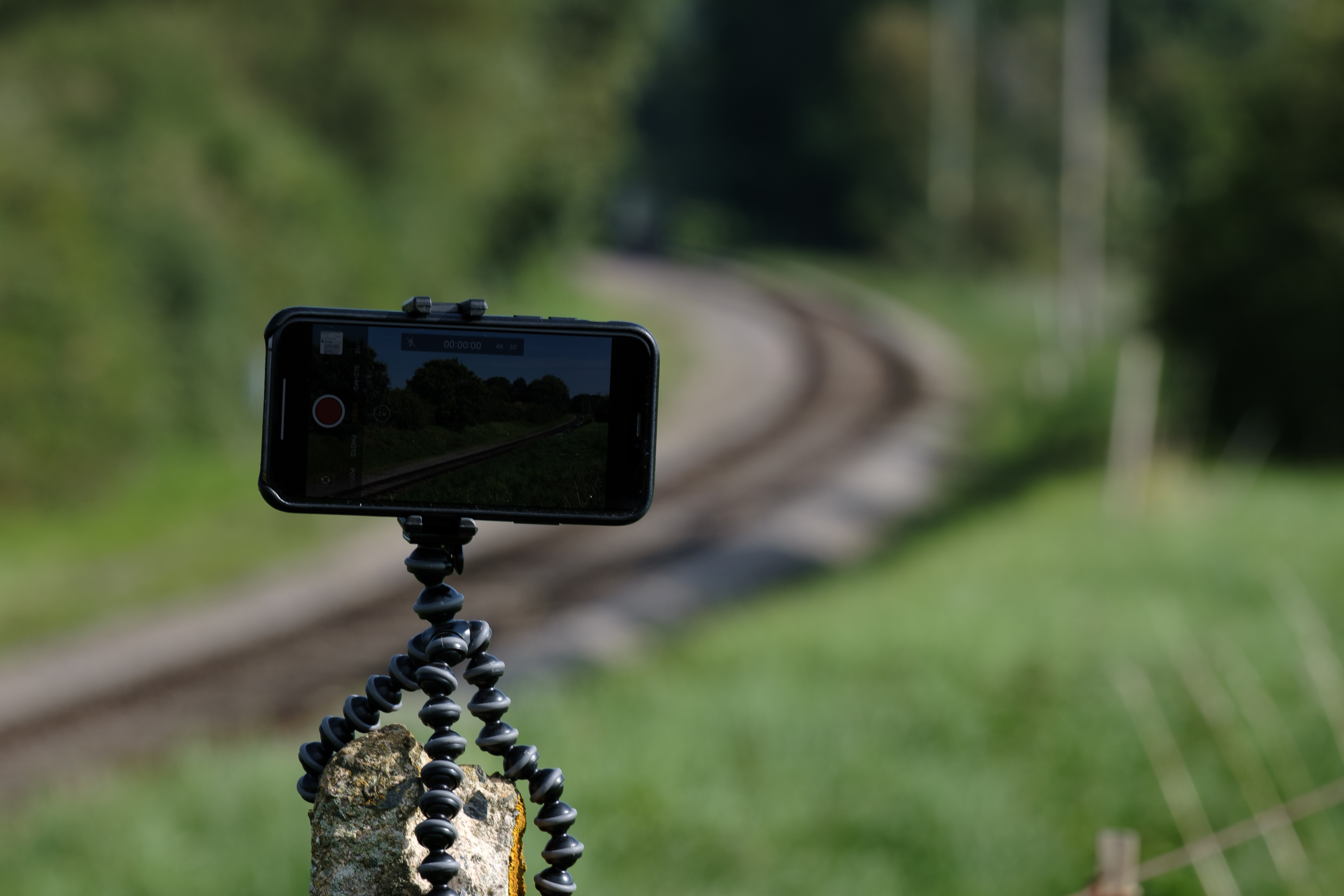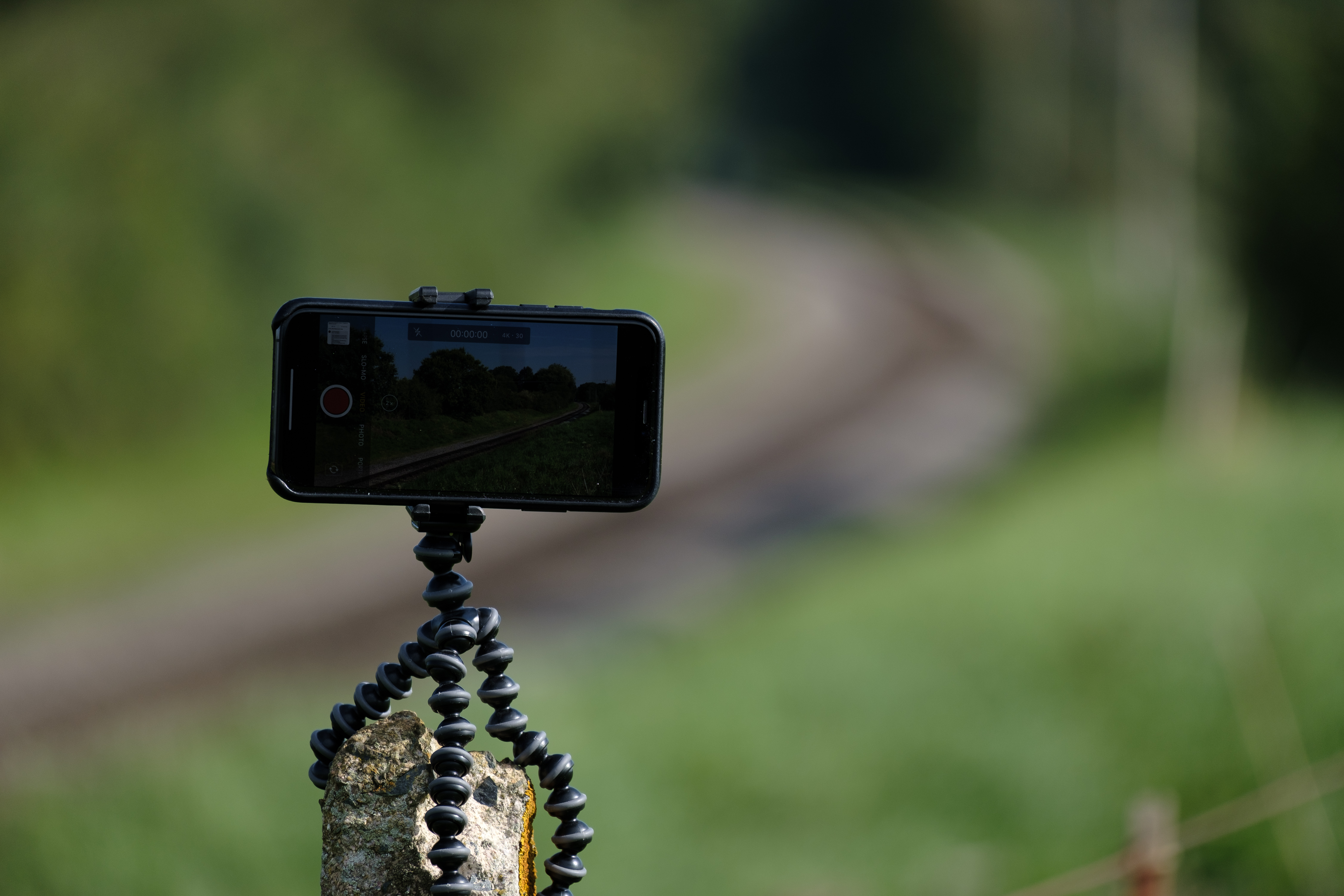Recovering details from darkness

I’ve been experimenting with using my iPhone XS to take video while I use my X-T3 to photograph still images. I had this idea that it would be fun to capture the iPhone set up to take a photo, but when I took the shot the image on the iPhone was very very dark and I thought that it wouldn’t work.
This is the original picture:

The idea was there, but the iPhone’s screen was too dim. I had used the RAW format for this picture and there’s a lot of information captured in that far too dark section. I loaded it into Lightroom and used a local adjustment brush to increase the brightness of just the screen of the iPhone. To do this, I brushed over the screen area and moved the exposure slider to +3. The nice thing about local adjust adjustments is that they only affect the part of the photo you want to affect as a +3 exposure over the entire frame would have looked terrible.
As it was, the image on the iPhone’s screen showed exactly what I hoped: a sharper image of what the viewer can see blurred out in the background. This has the effect of drawing their eyes to the phone which is the subject of the shot.
As you can see from the image at the top of the page, it came out very nicely indeed.
That out-of-focus background
Let’s also look at the out-of-focus area. This photograph was taken at f/11. Intuitively, we know that wide apertures like f/1.4 give a shallow depth of field and with a narrow one like f/11 we will get much more of the scene in focus. So what happened here? Clearly the background is out of focus!
In this case, the photo was taken with a focal length of 200mm, which on the X-T3 is equivalent to 300mm at 35mm “full frame”. This amount of telephoto, coupled with the fact that the background is many feet behind the iPhone results in the nicely blurred background.
In fact, a wider aperture would result in too much blurring as shown in the following picture which was taken at f/4.8:

As you can see, the background is so out of focus that the tracks are no longer defined which ruins the effect as the viewer has to work much harder to determine the subject of that the camera is watching. It’s just not as good.
It just goes to show that you don’t necessarily need a really fast lens with a wide aperture to achieve the effect you’re looking for and that the amount of out-of-focus that the background is can matter.